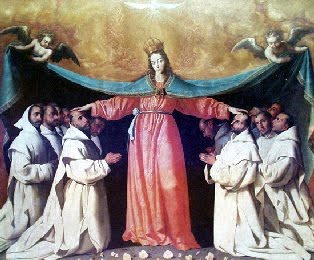 In today’s Gospel at the Extraordinary Form of the Mass (Matthew 15:21-28), “Jesus went forth and retired into the coasts of Tyre and Sidon.” Notice the word “retired.” Both the Latin and Greek texts translate more literally as “withdrew” or “seceded.” Both “retired” and “withdrew” have inklings that suggest contemplation and perhaps even solitude. These areas of Tyre and Sidon, Joshua in the Old Testament considered to be within the boundaries of the Promised Land. At the time of Jesus, Tyre and Sidon were inhabited by Gentiles, places that Jesus commanded His apostles to avoid.
In today’s Gospel at the Extraordinary Form of the Mass (Matthew 15:21-28), “Jesus went forth and retired into the coasts of Tyre and Sidon.” Notice the word “retired.” Both the Latin and Greek texts translate more literally as “withdrew” or “seceded.” Both “retired” and “withdrew” have inklings that suggest contemplation and perhaps even solitude. These areas of Tyre and Sidon, Joshua in the Old Testament considered to be within the boundaries of the Promised Land. At the time of Jesus, Tyre and Sidon were inhabited by Gentiles, places that Jesus commanded His apostles to avoid.One option which should be considered as to what our Lord’s purpose for going there was is that He went there to withdraw Himself from the crowds and spend time with His heavenly Father. In other words, since He commanded His apostles to avoid these regions, Jesus Himself wasn’t going there to preach. Of course, as the Gospel account continues, only Divine Providence could have made things work out as they did with Jesus meeting there “a woman of Chanaan.” One can only imagine the unbreakable bond that these moments of Jesus communing with His heavenly Father must’ve been like; and even our wildest imaginational scenarios fall far short of the reality of the intense intimacy of this union. Who could possibly explain the interior life of a Man Who is also the Second Person of our Triune God? He is Man seeking God and yet He is Himself the beatific vision.
But as Man, Jesus teaches us the need to retire, to withdraw ourselves from the hustle and bustle of life and seek intimacy with our God. Saint Luke records for us: “And it came to pass in those days that He [Jesus] went out into a mountain to pray, and He passed the whole night in the prayer of God” (Luke 6:12). There are some wonderful passages in the Gospels where Jesus explicitly is praying, and there are some passages in which He is at least implicitly praying. We must accept, however, that in a very great mystery, Jesus was never out of communication with the Father.
For human beings, our weakness could not sustain the interior life of Jesus, for that superior exchange of divine love would burst our hearts. Some have come close, however. After the death of Saint Philip Neri, it was discovered that he had an enlarged heart which was attributed to a mystical ecstasy. This is the same saint who was well-known for levitating above the altar during holy Mass.
The example of Jesus and the saints teaches us to unceasingly seek a closer, intimate union with God. It must be an act of our free will to seek God, but He decides the pace to which we climb the spiritual ladder; and it is certainly God alone Who decides when we shall arrive at that perfect union with Him for all eternity.
We all go through life with a mountain of worries, desires, dreams, and “what ifs” that may never come. And yet, we struggle so much to set aside time to be with the One Whose design on our life is motivated entirely by love. One doesn’t have to look far to find saints who struggled in life and were constantly having what we might term as “one of those days.” Blessed Teresa of Calcutta had more days like that than most of us would be willing to bear. Her soul was in darkness for many years. But she has talked about days when all she could do was grab her Rosary and pray the prayers while completely unable to meditate on the mysteries; so stressed, that entering into the mysteries of our Lord and His holy Mother was not possible; but she said she found comfort in just being able to say the Paters, Aves, and Glorias.
The saints are good teachers because they learned from the Master. It takes one who is in harmony with heaven to teach by example that the way to combat “one of those days” is not by complaining, screaming, throwing things or taking it out on whoever crosses your path; but instead, turning to the great Comforter like Blessed Teresa did so often by reaching for her Rosary. How often do we turn to God when we feel that we have sunken in too deep and are unable to solve our dilemmas on our own? This is when prayer becomes the last resort. But the saints teach us what Jesus taught them by example in the Gospels: that prayer is the first resort.











